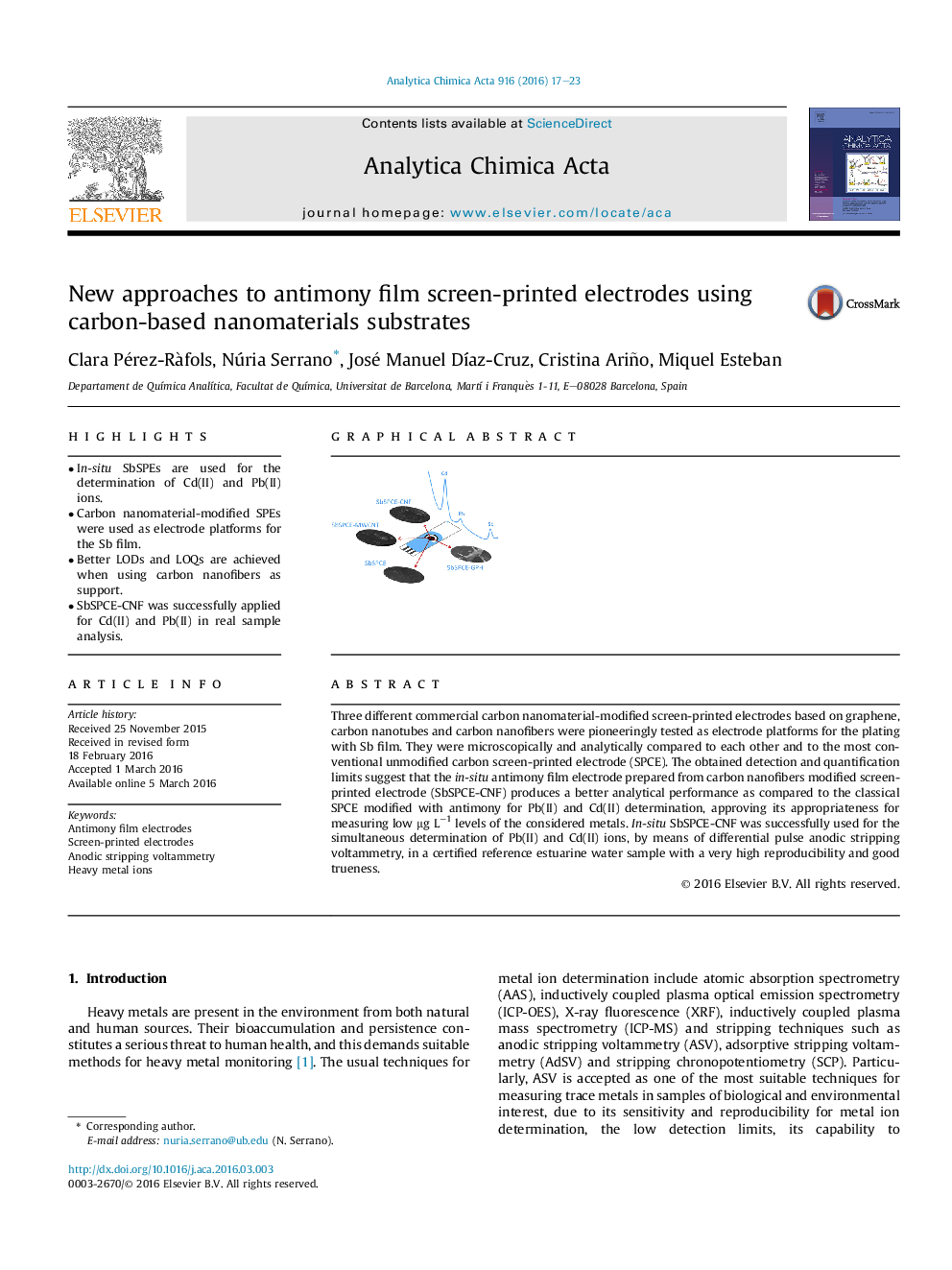| کد مقاله | کد نشریه | سال انتشار | مقاله انگلیسی | نسخه تمام متن |
|---|---|---|---|---|
| 1163006 | 1490916 | 2016 | 7 صفحه PDF | دانلود رایگان |
• In-situ SbSPEs are used for the determination of Cd(II) and Pb(II) ions.
• Carbon nanomaterial-modified SPEs were used as electrode platforms for the Sb film.
• Better LODs and LOQs are achieved when using carbon nanofibers as support.
• SbSPCE-CNF was successfully applied for Cd(II) and Pb(II) in real sample analysis.
Three different commercial carbon nanomaterial-modified screen-printed electrodes based on graphene, carbon nanotubes and carbon nanofibers were pioneeringly tested as electrode platforms for the plating with Sb film. They were microscopically and analytically compared to each other and to the most conventional unmodified carbon screen-printed electrode (SPCE). The obtained detection and quantification limits suggest that the in-situ antimony film electrode prepared from carbon nanofibers modified screen-printed electrode (SbSPCE-CNF) produces a better analytical performance as compared to the classical SPCE modified with antimony for Pb(II) and Cd(II) determination, approving its appropriateness for measuring low μg L−1 levels of the considered metals. In-situ SbSPCE-CNF was successfully used for the simultaneous determination of Pb(II) and Cd(II) ions, by means of differential pulse anodic stripping voltammetry, in a certified reference estuarine water sample with a very high reproducibility and good trueness.
Figure optionsDownload as PowerPoint slide
Journal: Analytica Chimica Acta - Volume 916, 15 April 2016, Pages 17–23
